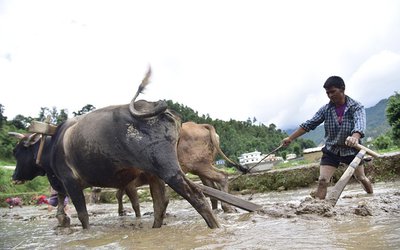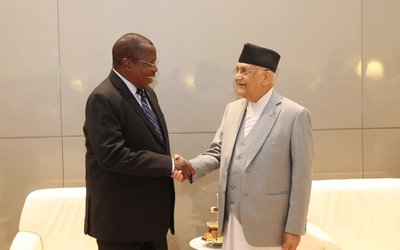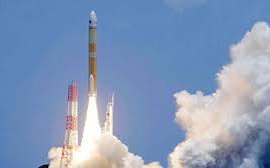More on National






- Chandramaya, a resident of Thimi, died when a motorcycle hit her on the road at Balkumari. She was declared dead on the way to Thimi Hospital.
- Suman Adhikari, a motorbike rider, died on the spot when a bus hit his motorcycle at a road in Vaise Village of Nuwakot district. Adhikari, a resident of Tuppche, was 21.
-Devendra Sunuwar, 35, of Mahankal- 1 of Sindhupalchowk, died when the motorcycle he was riding collided with a road divider at Jaya Bagewshwori. Pillion rider Kajiman Sunuwar of the same district was hospitalized at Om Hospital, Chabahil.
- Ishwori Thapa, 32, a resident of Kirtipur, on a scooter with Laxmi Neupane, 30, his pillion rider, got injured when a tipper hit their scooter in Balkhu. Neupane was admitted to the hospital for treatment of serious injury.
According to the records of the Metropolitan Traffic Division, every day, some seven persons are killed and scores of others are injured in road accidents in the country. A couple of deaths or casualties on average occur in the valley road accidents every day.
These records show how road accidents are rising alarmingly in the valley. Throughout the country, the number of accidents and the toll on life and property they take are worrisome.
The number of vehicles, including cars, trucks, buses and motorbikes, is rising but the length of roads remains more or less the same contributing to the number of accidents as well as traffic jams in the valley.
In the last five years, the number of all kinds of vehicles increased nearly four folds. With the population of over five million, Kathmandu’s urban areas are extended up to villages in the foothills of the mountains and there is a huge demand of vehicles to maintain mobility of the people. As affordable vehicles, the two wheelers are growing in demand.
A Major Issue
Till a decade ago, road accidents were considered minor problems and traffic jams were fewer. However, these days traffic jams are a regular phenomenon and road accidents are taking the lives of economically active population, adding burden to the family and the country.
Despite the rise in the number of accidents and traffic jams, the Metropolitan Traffic Police Directorate, which regulates the roads of Kathmandu, appears helpless as it is running with a limited number of personnel and equipment.
The system of license trials is as old as two decades. License holders do not necessarily know the basic traffic rules.
To make the matter worse, drivers rarely follow the traffic rules. Many drivers overtake from both the sides, and violate the lane disciplines that if you don’t do that, you appear crazy. The speed of the vehicles is always high on roads that are often in bad shape with a pothole and a poodle there.
Road signs in the city are ignored by both drivers and pedestrians. This is the reason most of the accidents occur. Uncontrolled speed and use of alcohol are also aggravating the situation.
“Most of the accidents are preventable simply by following the road marks and rules and regulations,” said DIG Bigyan Raj Sharma. “Traffic Police has been working to enforce the law as well as to generate the awareness level.”
With the appointment of DIG Sharma, a veteran national soccer player, as the chief of Metropolitan Traffic Police Directorate (MTPD), some changes in the traffic management were becoming visible. However, as DIG Sharma was in the process of making these improvements, he was transferred to another division just last week.
“I made efforts to strengthen the institution of traffic division. What I was doing was not for the sake of my personal interest, but to improve the institutional capability of the traffic police,” DIG Sharma told New Spotlight. “I will be satisfied if Kathmandu’s city dwellers don’t have to spend a lot of time in driving in a mess and bearing the trauma of accidents and casualties.”
State of Road Accidents
According to the Metropolitan Traffic Police Division, road accidents cause 5-7 deaths, 14-15 serious injuries and 24-25 general injuries every day. Half of the seriously injured people will either die or will have to live in disability after medical treatment.
The families of seriously injured persons have to bear a huge economic, as well as mental, burden. A case study of the Traffic Police indicated that a person has been spending an average of Rs.300,000.00 for medical treatment.
Even a person with general injury spends Rs. 10,000.00. In case of death, insurance companies pay Rs.500,000.00 for the family of the deceased.
If the situation remains unchanged, road accidents will be leading cause of death in Nepal. This will be higher than for HIV or other diseases like lower respiratory infection and diarrhoea.
As in other parts of the world, speed and driving under the influence of alcohol are causing major troubles. Had there been a reduction in the speed of a car by 1 kilometer an hour and a control in the consumption of alcohol, that would have reduced the accidents by 4 to 5 per cent.
Number of Vehicles
According to the Department of Transport Management, there are 1,178,911 vehicles registered in Nepal till July 2011. Out of this, 570,145 vehicles are registered in the Bagmati zone. The number of motorbikes or two wheelers is 861,663. Some 292,155 are four wheelers.
Thanks to the financial crisis and economic recession, import of vehicles has declined a bit, helping ease the traffic congestion to some extent.
According to car importers, the demand has dropped by over 30 per cent and dealers are reluctant to clear customs and bring vehicles to their showrooms that are already packed with un-sold vehicles.
Sales of both motorbikes and four wheelers have come down following the budget presentation in November last year that increased the excise duty and other taxes, making vehicles dearer.
Of late, importers, who normally place orders three months in advance, are cancelling their orders. “Dealers already have a massive stock of unsold vehicles,” said Saurav Jyoti, president of Nepal Automobile Dealers’ Association (NADA).
Birgunj customs is the major entry point but customs officials said the import of both small and large vehicles through the customs office has declined compared to last year. According to officials, in the first nine months of the current fiscal year, import of small automobiles through the Birgunj customs dropped to 5,407 units worth Rs 3.3 billion from 6,818 units worth Rs 3.45 billion during the same period last year. The import of trucks and mini trucks also fell to Rs 860 million from last year’s Rs 1.63 billion and that of loaders and excavators decreased to Rs 1.44 billion from Rs 4.31 billion. Similarly, traders imported 533 double-cab pick-ups worth Rs 485.9 million compared to 665 units for the same period last year.
Despite the collection of huge amounts of taxes from vehicles, the government spends very nominal amount of money in the improvement of road infrastructures and makes vey nominal investment in enhancing the capability of traffic police and traffic management system.
However, there are 29 traffic posts in the valley with 965 traffic police. They have to enforce traffic rules and regulate the vehicle movement in 1,594.67 kilometers of valley roads. According to a study, a traffic police has to look at 591 vehicles in the street within 1.65 kilometers of road. A traffic post has to look at 19,466 vehicles plying in 54.98 kilometers of road.
From rampant parking to reckless driving and increasing volume of vehicle pressure, Kathmandu is facing all kinds of traffic related problems. Among others, the number of old vehicles and slow moving vehicles, like tractors and tillers, are creating additional problems. Along with sound problems, there is a problem of air pollution.
The situation needs an integrated manner of dealing with it. The traffic police, as a regulator, is also responsible for enforcement. The Department of Road is responsible for road marking and road maintenance. The Department of Transport Management is responsible for license and registration. Finally, it is the municipality’s job to look at stray dogs, parking, city roads, and pedestrian paths.
Encroachment of pavement and delay in the construction of corridor roads are also helping contribute to traffic rule violation by the drivers. Add to this, the increase in the number of school buses.
According to the Metropolitan Traffic Police Division, there 8,803 accidents recorded in the year between July 16, 2010 to July 15, 2011. They involved 14,013 vehicles with 1,689 deaths, 4,701 serious injuries and 8,503 injuries. The number of animals killed in the accidents was 45 with 17 injuries.
The traffic police estimated that the total loss for Nepal in terms of monetary value is about Rs. 3.89 billion in the accidents. This includes vehicle repairing, insurance for deaths, expenditure for serious injuries, general injuries and death of animals. According to provisions, Rs. 500,000 will be paid for every person who dies in a road accident. The seriously injured spend an average of Rs. 320,000 for medicines in India and Rs. 150, 000 in Nepal.
According to the Metropolitan Traffic Police, there were 4,914 accidents, with 171 deaths, 557 serious injuries, and 3,730 general injuries with involvement of 8,656 vehicles earlier. Out of the vehicles, 6,160 were badly damaged.
The core city had the highest number of accidents followed by the ring road. There were 2,881 accidents with 55 deaths, 239 serious injuries in core area and 1,355 accidents with 63 deaths, 156 serious injuries and 901 simple injuries in the ring road. There were 383 accidents with 24 deaths, 93 serious injuries and 557 general injuries in Tinkune-Suryabinayak section. There were 295 injuries outside the ring road with 29 deaths, 69 serious injuries and 253 general injuries.









